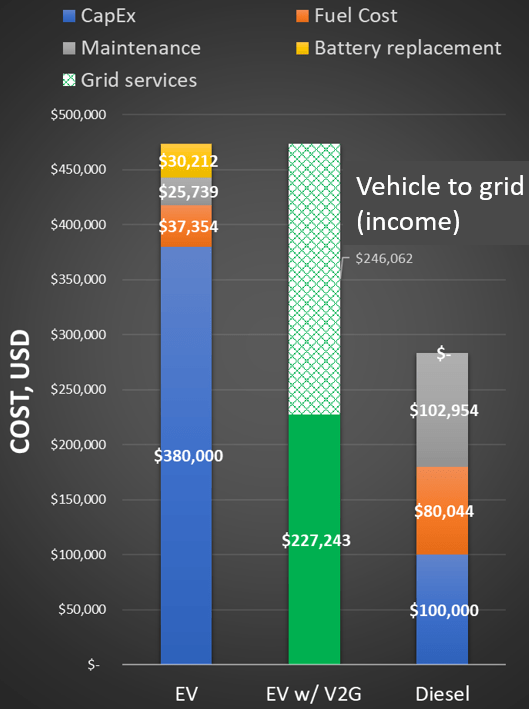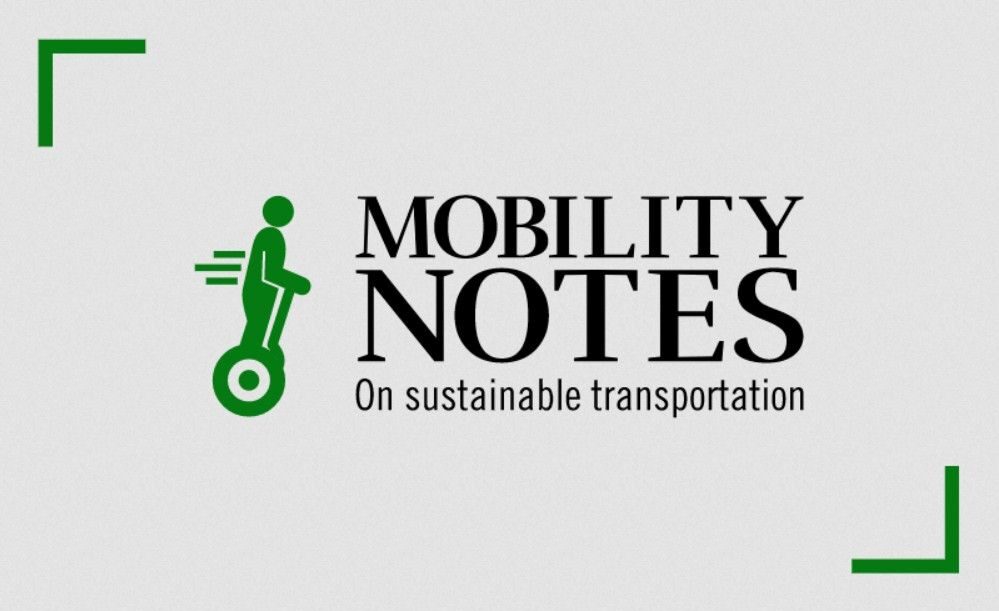Electrifying school buses in the US
Economics likely require buses to be used as distributed energy resources
Background
Roughly 480,000 school buses shuttle our kids – about 26 million of them – to and from schools in the US every day [1]. Today, the majority of these buses are powered by diesel engines and there is a strong push to electrify this segment.

Converting a school bus fleet to fully electric is perhaps considered low-hanging fruit for the following reasons:
- Buses have a fixed route and time of operation, lending themselves well for recharging overnight and in between trips at the same charging station.
- Range is not a big concern, on average buses drive around 35 miles per trip (or 70 miles per day considering two trips). [2]
- For the low-speed, low-load and intermittent driving profile, older diesel engines are especially prone to be inefficient.
- Pollution within buses can be much higher than outside, especially posing a risk to young lungs. While this may be partly attributed to pollution from upstream vehicles, there is evidence [3] that older buses can be “self-polluting”, due to particles from the crankcase and also tailpipe making their way into the cabin. Crankcase filtration systems and diesel particulate filters address both of these sources however, and a modern diesel buses should significantly solve this problem
[2] “A Statistical Characterization of School Bus Drive Cycles Collected via Onboard Logging Systems”, NREL – Link
Total cost of ownership: Need VTG for parity with diesels
Other than the obvious – the need to build sufficient charging infrastructure – transition to an electric fleet will of course require $. Electric vehicles are much more expensive today as compared to ICEs.
Blue Bird Corporation presented their estimation of the economics at the 2021 DOE Vehicle Technologies Office Annual Merit Review [4]. This is shown in the figure on the right. Despite falling battery costs, the upfront cost of an electric bus is expected to be ~ $280,000 higher compared to a diesel. One battery replacement assumed over the lifetime (15 years) adds another $30K. There are significant savings for an electric due to lower fuel and maintenance costs over the bus lifetime (assumed to be 15 years). Still, the electric bus costs close to $200,000 more than the diesel.
Vehicle to grid (VTG) capability will enable a substantial revenue stream, estimated here at close to $250K, which could make the total cost of ownership of electrics attractive. The idea is to use dormant vehicles for energy storage and to provide electricity back into the grid as needed. A similar view is expressed in another article here.
[4] BlueBird, “V2G Electric School Bus Commercialization Project”, 2021 AMR. Link to the presentations.

What else ?
Some other considerations:
- Diesels are getting more efficient. The GHG Phase 2 standards for heavy-duty vehicles start in 2021 and are required to reduce fuel consumption by up to 24% [5]. Electric powertrains are also getting more efficient. Revised TCO analyses will have to take into account the improved performance.
- Diesels are not the only options – gasoline and natural gas driven buses could play an important role in the future fleet. These have their own benefits and infrastructure/maintenance challenges and these will also have to be taken into account when calculating the optimal use of taxpayer dollars. Not all solutions will work for all neighborhoods.
- Finally, while transitioning to cleaner fuels and electrification will ultimately deliver the benefits of lower emissions and greenhouse gas emissions, these new technologies will have to ensure that families and kids from all walks of the society benefit equally and that the added cost does not add a burden especially on schools serving disadvantaged communities. Read here for more on the increasing focus on environmental justice.
[5] DieselNet : United States: Heavy-Duty Vehicles: GHG Emissions & Fuel Economy
Other recent posts
Conference Summary – SAE WCX 2025
![]()
A summary of the “SAE WCX 2025” conference held in Detroit.
IRENA Renewable Energy Capacity Statistics 2025
![]()
According to the latest report from IRENA, 2024 saw the largest increase in renewable capacity, accounting for 92.5% of overall power additions.
CO2 Emissions Performance of Heavy-Duty Vehicles in Europe – 2022 Results
![]()
The European Commission has published the official 2022 CO2 emission results for heavy-duty vehicles. Many OEMs are ahead of the targets and have gained credits, while others have their work cut out as we approach the 2025 target.
Like it ? Share it !

